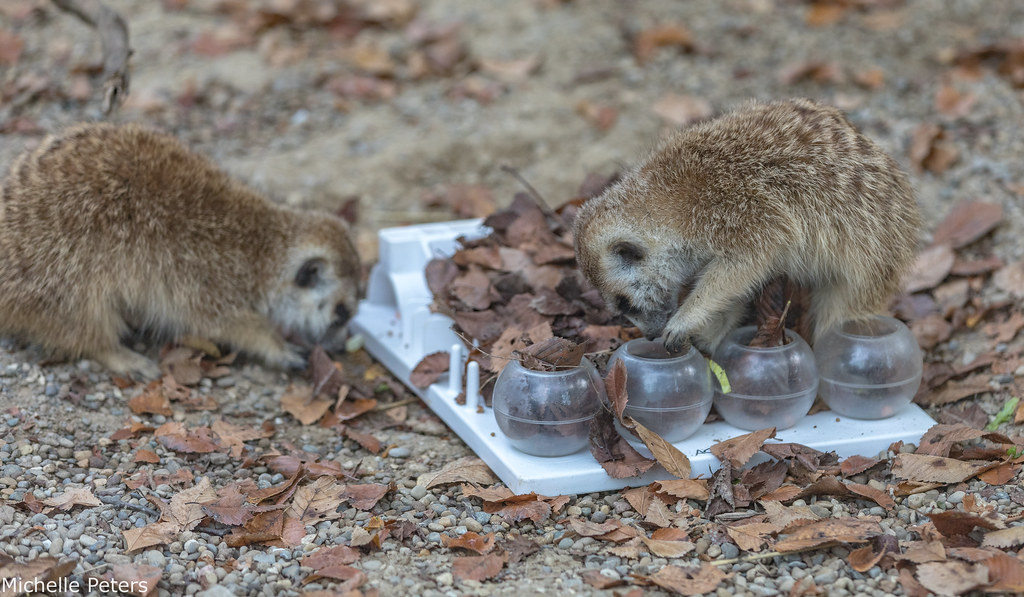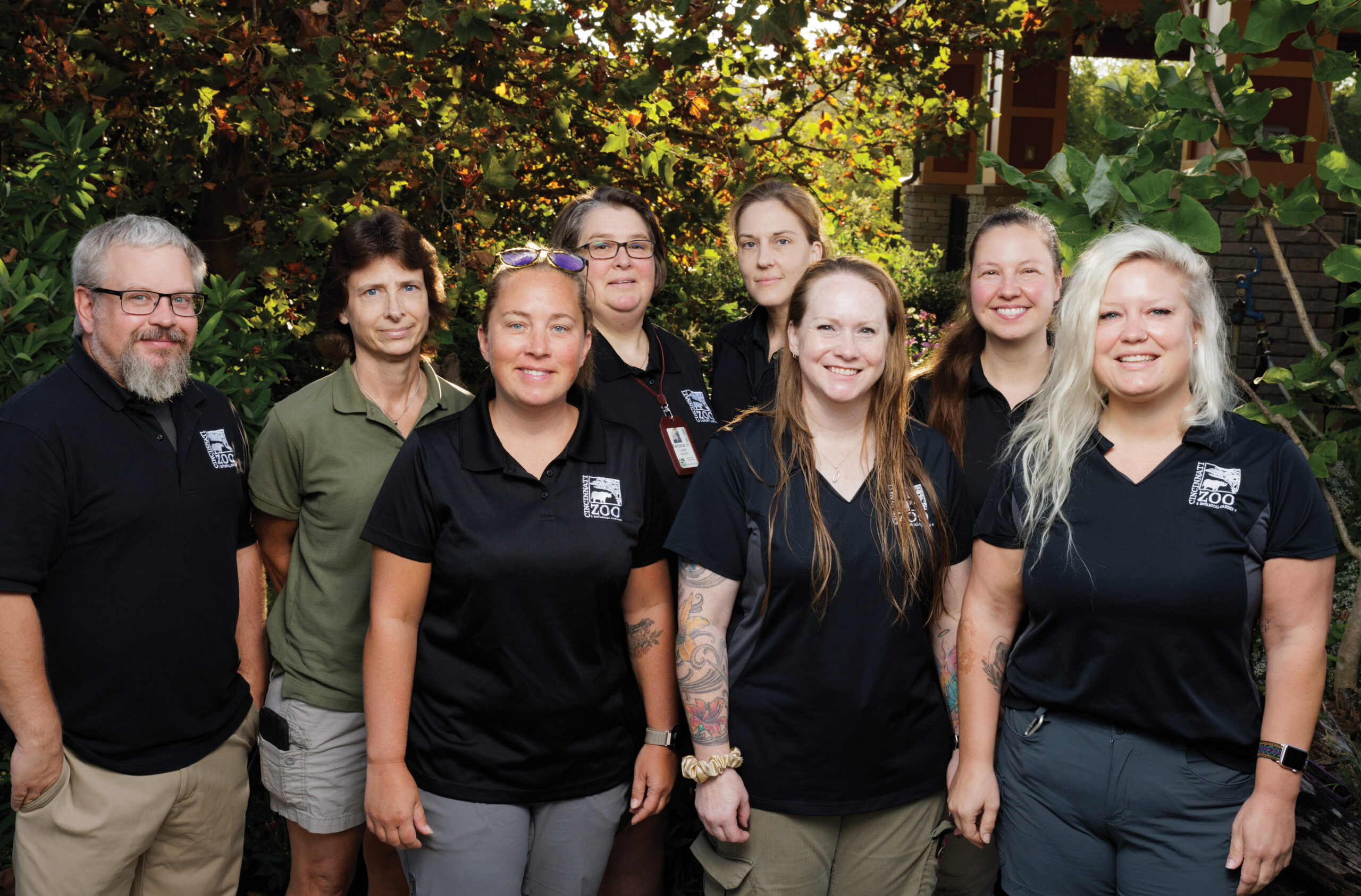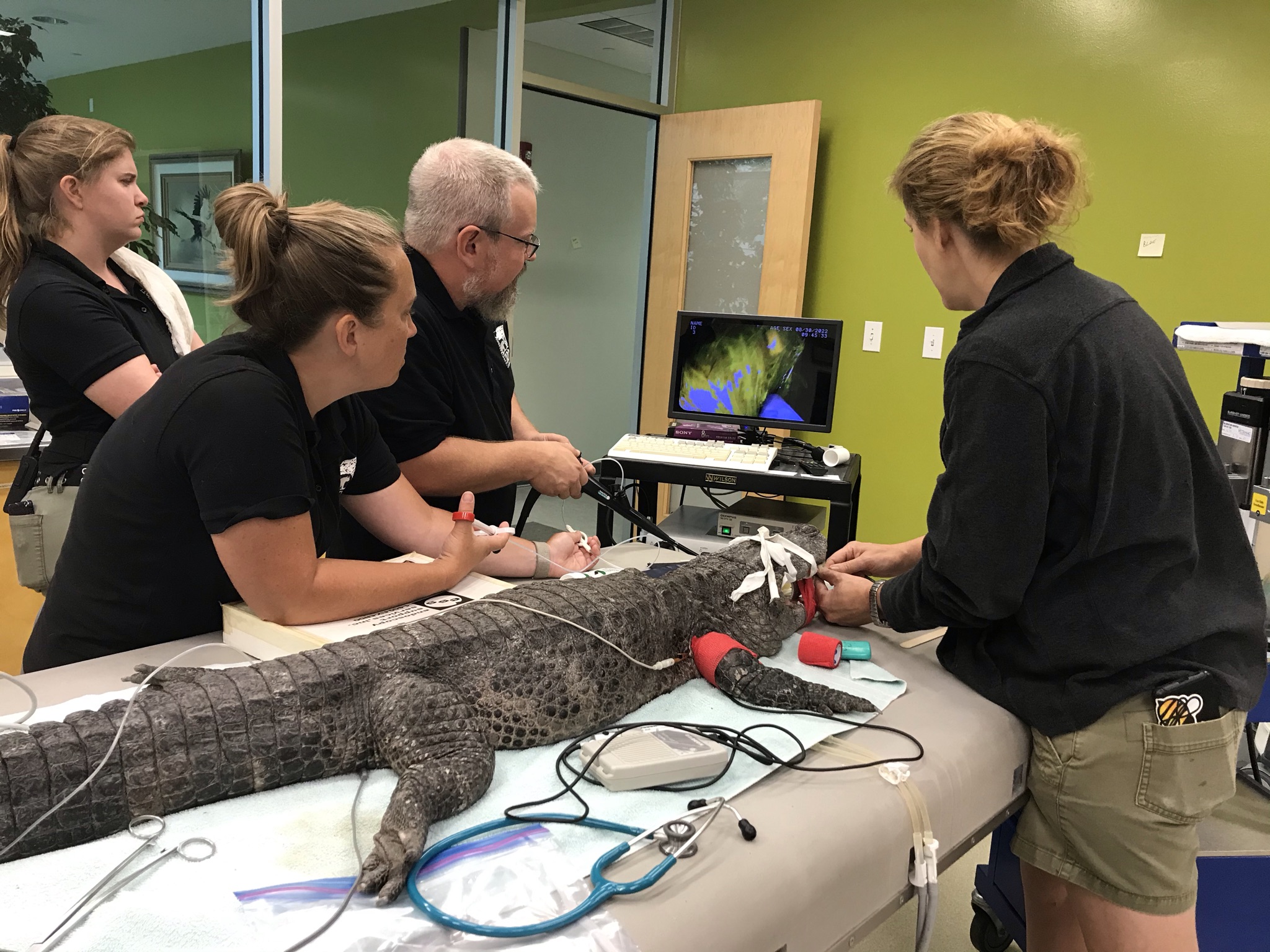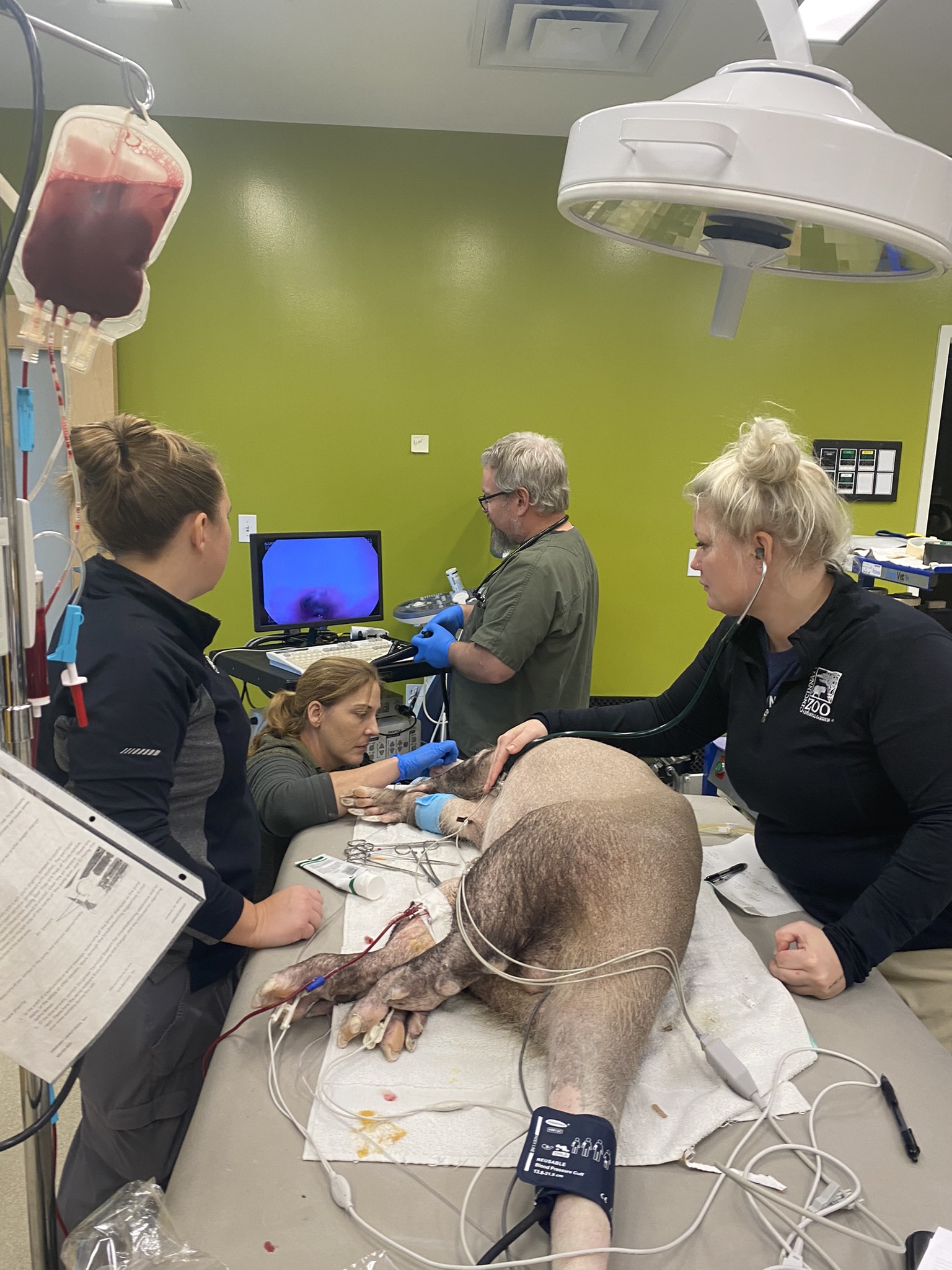Animal Enrichment
Enrichment is an important part of the daily care we provide for our animals. Enrichment is anything the zookeepers add to the animals’ environments to stimulate their senses and elicit natural behaviors such as foraging, exploration, hunting, problem solving, and even play. Each species’ individual needs are considered when designing enrichment activities.

Our keepers use enrichment to keep animals healthy by encouraging physical activity and mental stimulation. Some of the ways our animals are enriched include environmental, social, training, environmental enrichment devices, sensory and novel food.
Health
The Cincinnati Zoo has three vets on staff as well as vet technicians and a nutritionist.

Back row (L to R): Mike Wenninger, Jenny Kroll, Barbara Henry, Jenny Nollman, Jessica Heinz Front row: Amy Long, Joy Cooper Janell Duvall

How does the Zoo take care of so many animals?
There is 7-day-a-week coverage at the Cincinnati Zoo Animal Hospital. Whoever is available and gets the call will treat that case. Some of the staff members prefer to work with some animals more than others, but everyone is well-rounded and experienced enough to know what is going on with every animal.
Every case is unique. Situations are judged on a case by case basis and discussed heavily with the keepers to make the judgment call on who and what equipment to send. Of course, all of that planning can go completely out the window in an instant if an emergency arises. At the end of the day, the three vets review everything that happened during their shift. Conversations about difficult cases are held and they discuss plans for the upcoming schedule before they prepare for a new day.
What is the standard protocol to care for an animal?
Keepers contact the Animal Hospital and provide known information about the case. If the situation warrants, a vet will see the animal and assess how to go about treating them.

In some cases, we can run routine tests (blood work, sonogram, etc.) fairly easily with the animal awake. However, some animals, such as lions and tigers, must be anesthetized in order to treat them. Thanks to our operant conditioning staff, anesthesia is no longer necessary for certain animals for routine procedures. Gorillas, orangutans, rhinos and even a polar bear have been trained to offer body parts for exams voluntarily!
Every morning hospital staff meet to figure out what the day will be, what procedures are scheduled, which animals need post-procedural checks (rechecks) and to discuss the cases as a team. Then cases are assigned and they head out!

